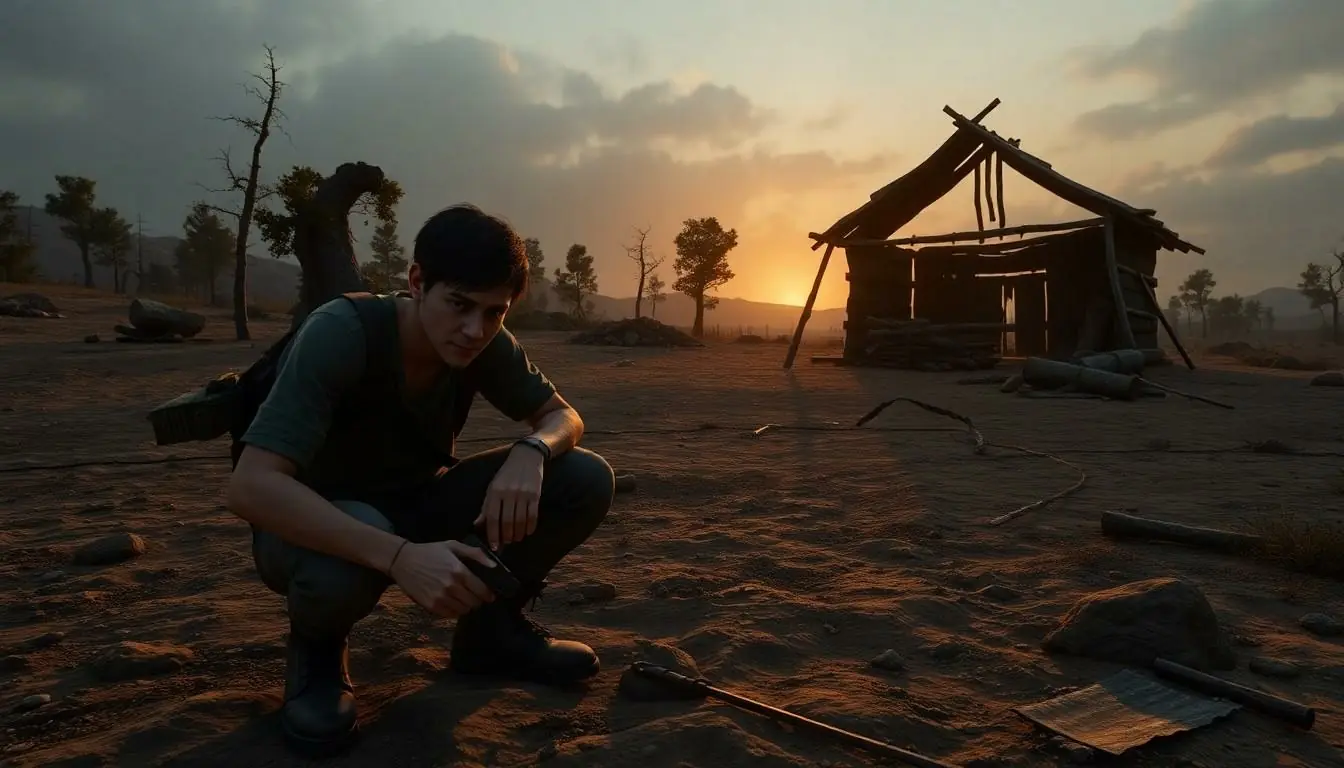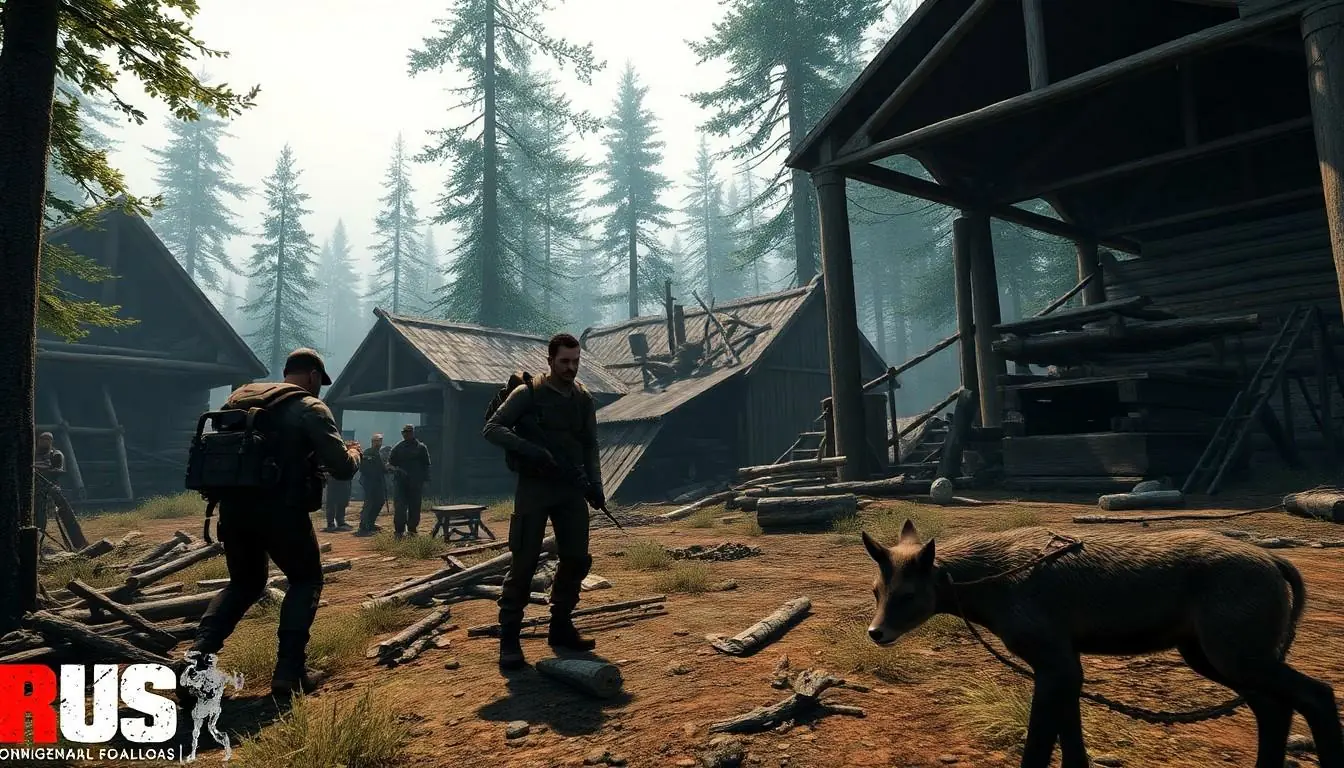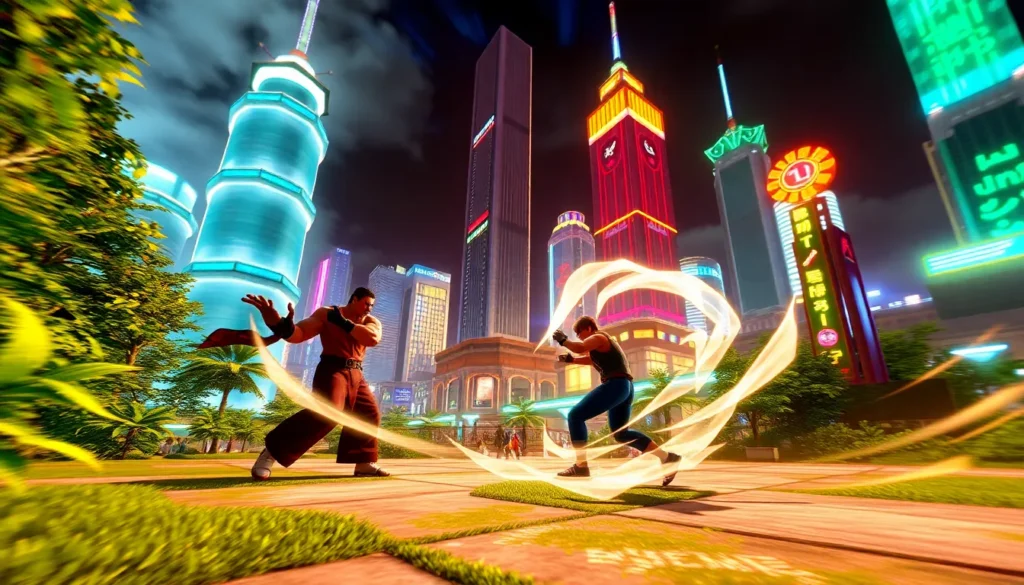Table of Contents
ToggleIn a world where survival hinges on wit and resourcefulness, Rust stands out as the ultimate test of human ingenuity—mixed with a dash of chaos. Picture this: you wake up on a beach, armed with nothing but a rock and a burning desire to not get eaten by a bear or, worse, another player. It’s a wild ride filled with crafting, building, and the occasional betrayal that’ll make you question your trust in humanity.
Whether you’re a lone wolf or part of a ragtag crew, Rust offers a playground where every decision can lead to glory or disaster. With its gritty graphics and intense gameplay, it’s no wonder players keep diving back into this brutal landscape. Get ready to gather resources, build your fortress, and maybe—just maybe—survive long enough to tell the tale.
Overview of Rust Background Game
Rust is a multiplayer survival game that pushes the limits of player resilience. Players begin with no resources and must quickly adapt by gathering materials and crafting essential tools. Each player faces threats from wildlife and hostile human opponents, creating a constant tension that enhances the experience.
The crafting system allows for extensive customization. Players can build shelters and weapons, leading to diverse strategies and gameplay styles. Resource management plays a critical role, as players must balance their time between gathering, crafting, and defending against threats.
Environmental challenges include harsh weather conditions, hunger, and a dynamic ecosystem. Adapting to these factors enhances immersion and increases the stakes of survival. Rust encourages players to collaborate or compete, often resulting in unexpected alliances or betrayals.
The graphics provide a gritty realism that immerses players in a post-apocalyptic landscape. Strong visual elements combined with intense gameplay create a captivating atmosphere that keeps players engaged for long periods. Renewable resources, like trees and animals, regenerate over time, allowing for continuous gameplay while emphasizing sustainability.
Frequent updates contribute to evolving content and gameplay mechanics. Developers consistently introduce new features, balance changes, and optimizations, ensuring the game remains fresh. Community feedback influences many updates, creating a dynamic environment shaped by its players.
Overall, Rust’s blend of strategy, survival, and player interaction creates a unique gaming experience. Engaging gameplay mechanics and a well-designed world invite players to explore, compete, and survive against all odds.
Gameplay Mechanics
Rust features robust gameplay mechanics emphasizing survival and resource management. Players engage with a rich crafting system and face numerous survival elements, both critical to their success.
Crafting System
Crafting remains a cornerstone of Rust’s gameplay. Players gather materials from their surroundings, ranging from wood to metal. Essential tools and weapons can be crafted using these resources, allowing customization for different play styles. Structures built for shelter expand upon available materials, enhancing defense. Special crafting stations improve efficiency, enabling players to create advanced items as they progress. Frequent updates introduce new blueprints, ensuring the crafting experience evolves. Each crafted item plays a vital role in survival, encouraging exploration to find the best resources.
Survival Elements
Survival elements heighten the intensity of gameplay. Players contend with environmental challenges, including weather fluctuations and hunger. Wildlife represents another threat, as predators roam freely, adding to the danger. Managing health becomes essential, as depletion can lead to dire consequences. Constant tension arises when players face other human opponents, creating a hostile atmosphere in the game world. Coordination with teammates may prove beneficial, fostering partnerships against common threats. Ultimately, embracing these survival elements makes every session unpredictable and immersive.
Graphics and Design
Rust features a gritty and immersive graphic style, contributing to its intense gameplay experience. The art direction emphasizes realism, showcasing detailed environments that reflect the harshness of survival.
Visuals and Art Style
Detailed textures define the game’s visuals, creating an authentic atmosphere. Each environment, from dense forests to barren landscapes, is carefully crafted, immersing players in the world. Colors are often muted, enhancing the sense of realism and danger. Models for weapons and structures display a high level of detail, allowing for significant customization. Players often notice subtle environmental details that further enrich their experience.
Environmental Effects
Dynamic weather systems enhance the game’s immersive quality. Changes in weather affect gameplay, impacting visibility and player strategies. Rain, snow, and fog offer challenges, making survival more difficult. Day-night cycles influence player interactions, with nighttime bringing increased risks from wildlife and enemies. Sounds of the environment also immerse players, with rustling leaves or distant gunfire heightening tension. The blend of visual and environmental effects in Rust creates a captivating atmosphere that keeps players engaged.
Community and Multiplayer Experience
Rust fosters a vibrant community centered around multiplayer interaction. Players engage with each other in various ways, ranging from alliances to fierce rivalries, shaping the overall gaming experience.
Player Interaction
Interactions among players drive the chaotic nature of Rust. Teamwork can offer survival advantages, while betrayal adds an unexpected layer of tension. Players often form groups for protection, sharing resources to build stronger bases. Covert operations can also occur, leading to unexpected confrontations. With voice chat and emotes, players communicate effectively, enhancing camaraderie or provocation during encounters. The dynamic world encourages both cooperation and competition, making every player interaction significant.
Servers and Gameplay Modes
Rust offers diverse server options that cater to different gameplay styles. Official servers provide standard gameplay experiences, while community-run servers often implement unique rules. Players can choose between PvP and PvE modes, impacting the level of aggression they face. Custom servers might feature increased resources or modified environments, catering to specific player preferences. Hosting private servers allows for personalized gameplay experiences, where friends can gather to craft and strategize together. Each server plays a vital role in shaping individual experiences within the game’s expansive world.
Updates and Future Developments
Rust regularly undergoes updates that enhance gameplay and introduce new features. The developers frequently add new content, including blueprints and resources, ensuring the crafting system remains fresh and dynamic. Recent updates have improved the game’s performance, addressing bugs and optimizing servers to provide a smoother experience for players.
Weapon balancing adjustments are also a focus, aimed at refining combat mechanics and ensuring fair competition within the game. Community feedback plays a vital role, as developers often incorporate player suggestions into future patches. Events such as seasonal updates bring unique challenges, inspiring players to adapt their strategies.
Future developments in Rust may include expansions to the current map, providing new biomes for exploration. Exploration often yields undiscovered resources and new crafting opportunities, keeping players engaged. Enhancements to the graphics engine may also be on the horizon, elevating the already immersive visual experience.
The developer roadmap hints at quality-of-life improvements, which would streamline various gameplay elements. In addition, planned updates might introduce new gameplay modes or features, fostering creativity and collaboration among players. Communication within the community, encouraged through forums and social media, facilitates a shared sense of investment in Rust’s development journey.
By focusing on player experience and innovation, the future of Rust promises ongoing excitement and challenges for both new and veteran players.
Conclusion
Rust stands as a testament to the thrill of survival gaming. Its unique blend of resource management and player interaction creates an unpredictable experience that keeps players coming back for more. The game’s gritty graphics and immersive environments enhance the sense of urgency and danger.
As players navigate the complexities of crafting and building while facing both environmental challenges and other players, they discover endless possibilities for strategy and collaboration. With regular updates and a dedicated community, Rust continues to evolve, ensuring that the excitement of survival remains ever-present. The journey in Rust is not just about survival; it’s about the stories that unfold in its brutal world.











